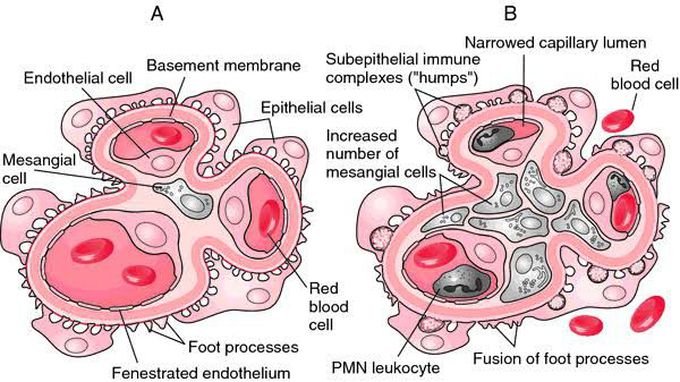


Crescentic Glomerulonephritis
Crescentic glomerulonephritis, also known as rapidly progressive glomerulonephritis, is characterized by the presence of extensive glomerular crescents (usually greater than 50%) as the principal histologic finding. The disease can be primary or secondary. Primary or idiopathic crescent glomerulonephritis is classified into the following types: Type 1 (anti-glomerular basement membrane [GBM] disease) presents with linear deposits of immunoglobulin G (IgG) Type 2 (immune-complex mediated) presents with granular deposits of immunoglobulin Type 3 (pauci-immune) presents with few or no immune deposits, antineutrophil cytoplasmic antibody-associated small-vessel vasculitis (SVV) that may be renal-limited or part of a systemic disease, for example, granulomatosis with polyangiitis (GPA). Type 4 includes combinations of types 1 and 3 Type 5 is ANCA-negative, pauci-immune renal vasculitis (5% to 10% of cases) A crescent is made up of proliferating epithelial cells that line the Bowman capsule and infiltrating macrophages. It is a marker of severe glomerular injury. The crescents may be circumferential or noncircumferential, and the presence of circumferential crescents in over 80% of glomeruli portends a poor prognosis.

